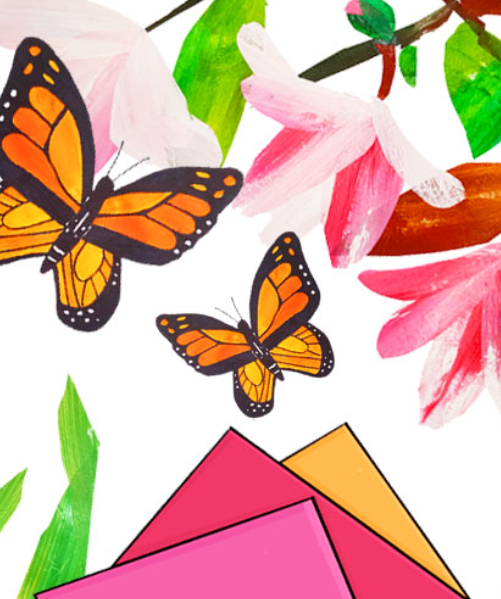Creating an effective lessons plan for art teachers is an art in itself. It requires a blend of creativity, structured planning, and a deep understanding of both the subject matter and the developmental stages of students. In this comprehensive guide, we will delve into the essential components of crafting lesson plans that not only engage students but also foster a profound appreciation for the visual arts.
Understanding the Core Components of an Art Lesson Plan
A well-structured lesson plan is the cornerstone of successful teaching. For art educators, this involves a meticulous process of planning, execution, and reflection. Here are the key elements to consider:
1. Objectives and Goals
Setting clear objectives is the first step in any lesson plan. These objectives should be specific, measurable, achievable, relevant, and time-bound (SMART). For art teachers, objectives might include:
- Understanding basic art techniques such as shading, perspective, and color theory.
- Developing fine motor skills through various art mediums.
- Cultivating an appreciation for different art styles and historical periods.
2. Materials and Resources
A comprehensive list of materials is crucial for any art lesson. This includes:
- Art supplies such as paints, brushes, pencils, paper, and canvases.
- Digital resources for virtual art lessons or supplementary materials.
- Reference images or artworks for inspiration.
3. Step-by-Step Instructions
Detailed instructions ensure that students can follow along and achieve the lesson’s objectives. This section should include:
- Introduction: Briefly introduce the topic and its relevance.
- Demonstration: Show techniques and processes step-by-step.
- Guided Practice: Allow students to practice with your guidance.
- Independent Practice: Let students work independently to apply what they’ve learned.
4. Assessment and Evaluation
Assessment methods should align with your objectives. For art, this might involve:
- Critiquing student work based on set criteria.
- Encouraging self-assessment and peer reviews.
- Maintaining a portfolio of student work to track progress over time.
Incorporating Diverse Art Techniques and Styles
To keep students engaged and cater to different learning styles, incorporate a variety of art techniques and styles into your lesson plans. Here are some ideas:
1. Drawing and Sketching
Drawing is fundamental to all forms of visual art. Lessons can cover:
- Basic shapes and forms.
- Shading and texture techniques.
- Perspective drawing to create depth.
2. Painting
Introduce students to different painting techniques and mediums:
- Watercolor, acrylic, and oil painting.
- Techniques such as washes, dry brush, and layering.
- Color theory and mixing.
3. Sculpture and 3D Art
Working with three-dimensional forms helps students understand volume and space:
- Clay modeling and pottery.
- Paper mâché and assemblage.
- Carving and construction with various materials.
4. Digital Art
Incorporate modern techniques with digital tools:
- Graphic design basics using software like Adobe Photoshop.
- Digital illustration and animation.
- Exploring mixed media by combining traditional and digital methods.
Fostering Creativity and Critical Thinking
Art education is not just about mastering techniques; it’s about fostering creativity and critical thinking. Here’s how to integrate these elements into your lesson plans:
1. Creative Problem-Solving
Encourage students to think outside the box:
- Assign projects that require innovative solutions.
- Use open-ended questions to provoke thought and discussion.
- Promote experimentation and taking creative risks.
2. Art History and Appreciation
Teach students to appreciate art from various cultures and time periods:
- Explore major art movements and their impact.
- Study the works of famous artists and their techniques.
- Discuss the cultural and historical context of different artworks.
3. Cross-Disciplinary Integration
Art can be integrated with other subjects to create a holistic learning experience:
- Combine art with history by creating projects based on historical events.
- Use mathematical concepts in art projects involving geometry and symmetry.
- Explore scientific themes through projects like botanical illustration.
Creating an Inclusive and Supportive Classroom Environment
An inclusive classroom environment ensures that all students feel valued and supported. Here are some strategies for art teachers:
1. Differentiated Instruction
Tailor your lesson plans to meet the diverse needs of your students:
- Provide alternative assignments for different skill levels.
- Use various teaching methods to cater to visual, auditory, and kinesthetic learners.
- Offer additional support and resources for students with special needs.
2. Encouraging Collaboration
Foster a sense of community and teamwork:
- Organize group projects and collaborative art installations.
- Encourage peer feedback and collaborative critique sessions.
- Promote a culture of mutual respect and support.
3. Celebrating Diversity
Incorporate diverse cultural perspectives into your art curriculum:
- Explore art from different cultures and traditions.
- Celebrate cultural holidays and events through art projects.
- Encourage students to express their unique cultural identities through their work.
Continuous Professional Development for Art Teachers
Staying updated with the latest trends and techniques in art education is essential for effective teaching. Here are some ways to continue your professional development:
1. Attending Workshops and Conferences
Participate in art education workshops and conferences to learn new techniques and strategies.
2. Networking with Peers
Join professional art education organizations to connect with other teachers and share ideas.
3. Online Courses and Webinars
Take advantage of online courses and webinars to enhance your skills and knowledge.
